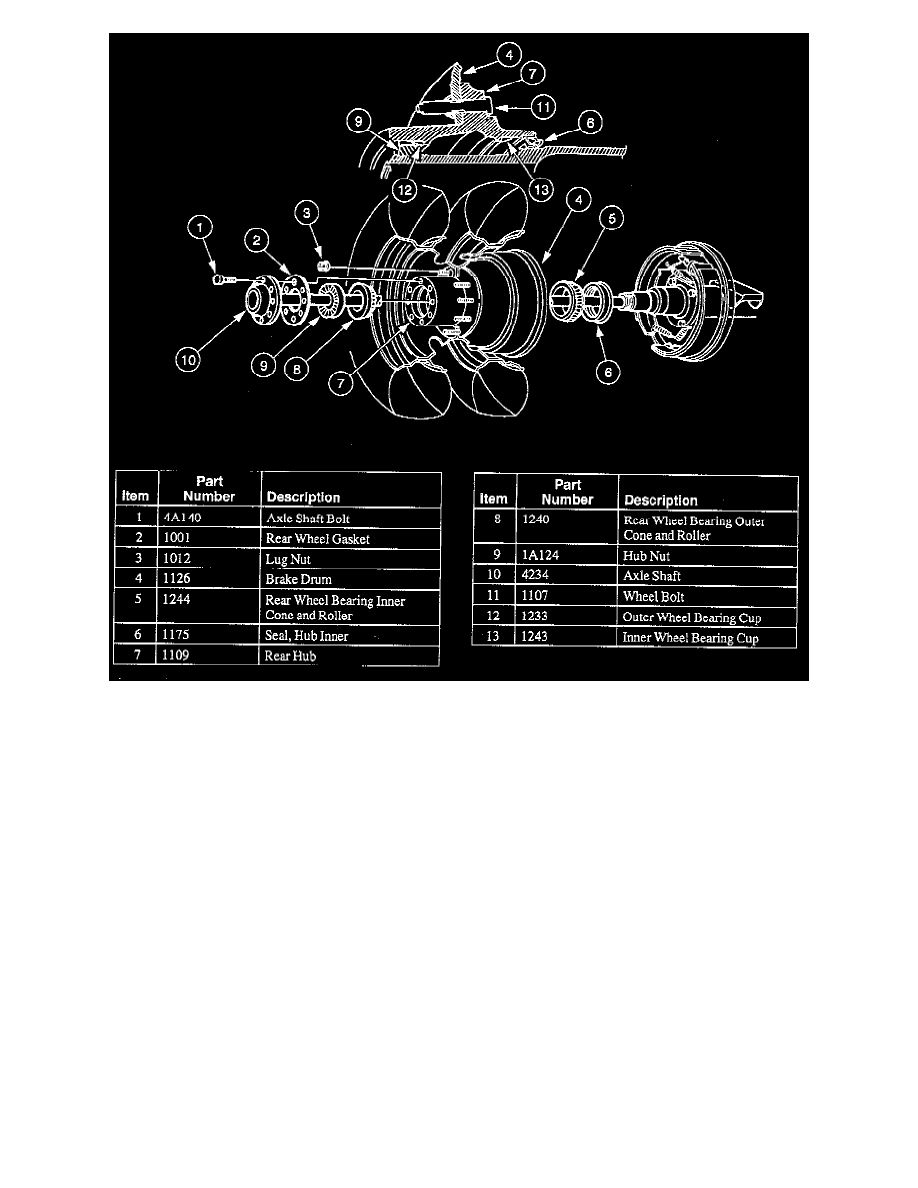E 350 1 Ton Van V10-6.8L VIN S (1997)

WARNING: On vehicles equipped with dual rear wheels, do not use pre-1985 (cone-shaped, one-piece) lug nuts to replace the integral
two-piece swiveling lug nuts. Older vehicle lug nuts can come loose in operation. Do not use older vehicle wheels, which have cone-shaped lug
nut seats, on this vehicle. Do not use the new design wheels and lug nuts on older vehicle wheel hubs. Use of intermixed wheels can lead to
damage to the wheel mounting system and can result in wheels coming loose in operation.
The rear hub is supported or floats on the axle spindle on two opposed tapered roller bearings. The rear hub is retained on the spindle by a ratcheting nut
that is tabbed to a slot on the spindle. The brake drum is mounted to the rear hub. A seal is installed inboard of the rear wheel bearing inner cone and
roller to keep the rear axle and wheel bearing lubricant from the brake components. The full-floating rear axles on vehicles have brake drums mounted
outboard of the rear hub, permitting brake drum removal for brake inspection without the need to remove the rear hub.
The rear wheel bearings are packed with a lithium-base grease, Premium Long-Life Grease XG-1-C or -K or equivalent meeting Ford specification
ESA-M1C75-B to provide initial lubrication until axle lubricant flows into the rear hubs and rear wheel bearing inner cone and rollers during vehicle
operation. These rear axles are vented through the vent hose in the left axle tube.
NOTE: Fill the cavity in the hub with axle lubricant before installing the greased outer wheel bearing.
Vehicles equipped with dual rear wheel (DRW) rear axles have the wheels attached to the brake drum.
